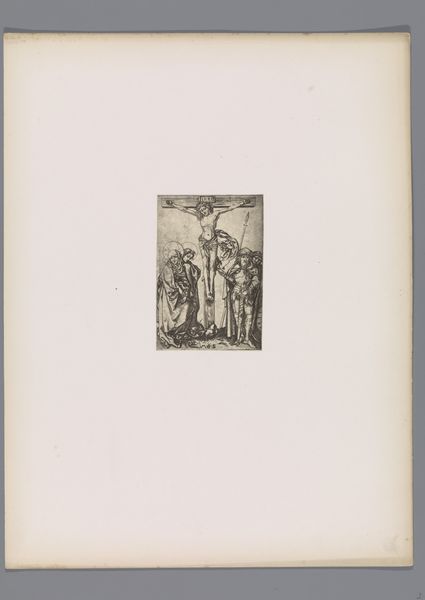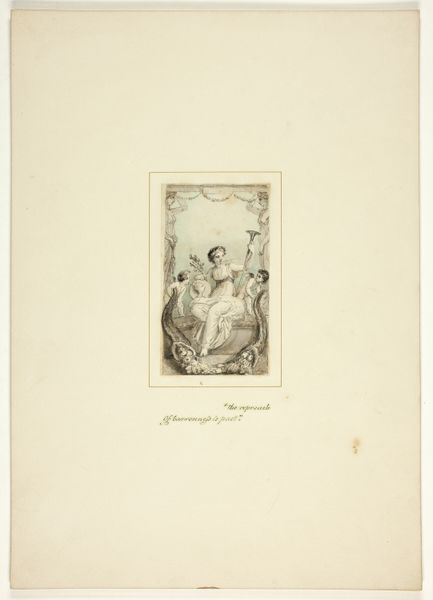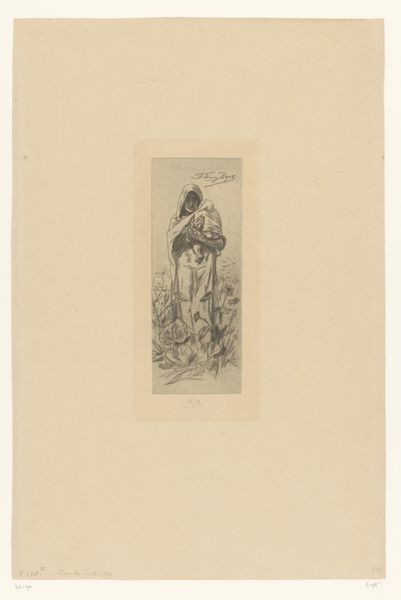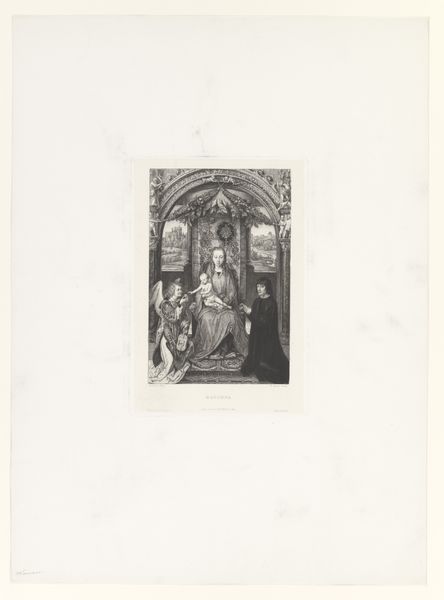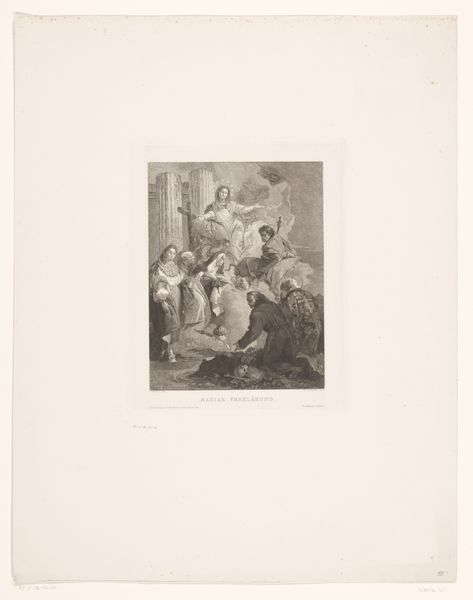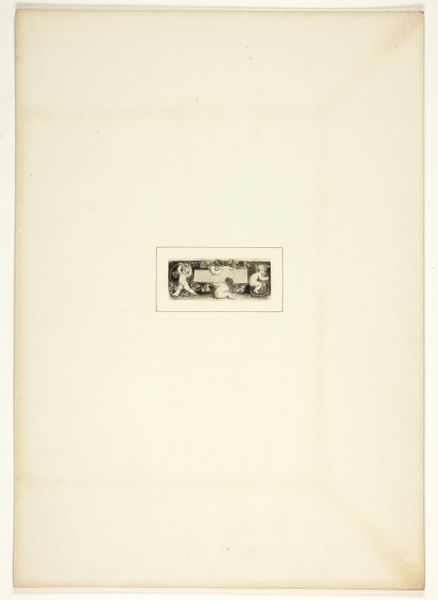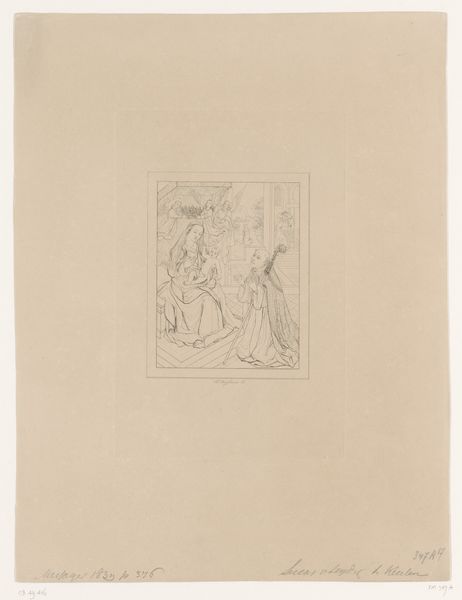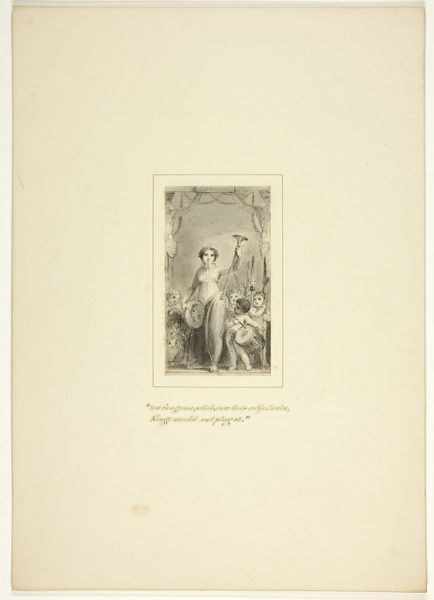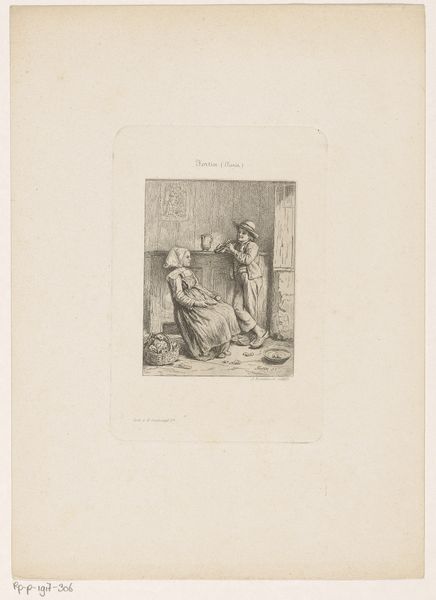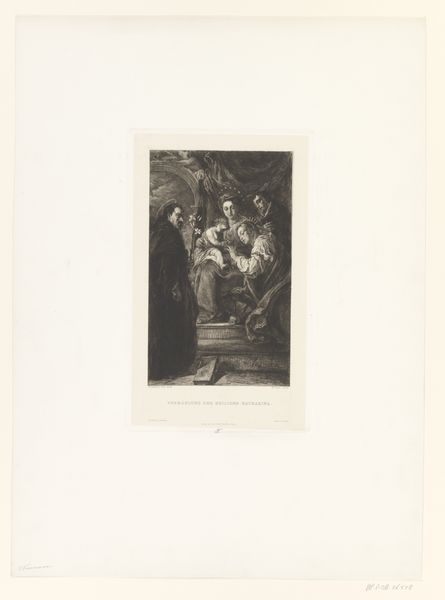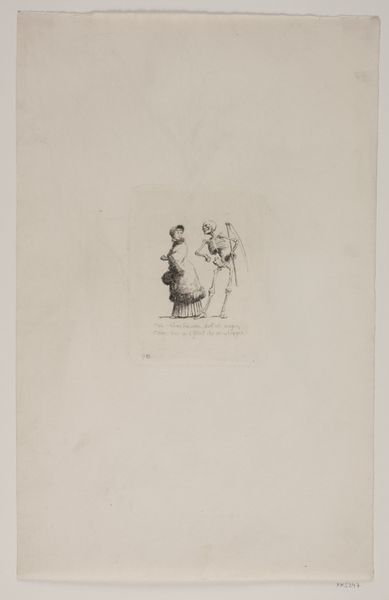
drawing, print, paper, ink, pencil, engraving
#
drawing
#
neoclacissism
# print
#
paper
#
ink
#
romanticism
#
pencil
#
history-painting
#
engraving
Dimensions: 105 × 60 mm
Copyright: Public Domain
Curator: Before us we have “Study for a plate from The Task,” a work created around 1800 by Thomas Stothard. It's a compelling example of Neoclassical printmaking, combining pencil, ink, and engraving on paper. What are your first impressions? Editor: There’s an interesting tension at play here. The drawing technique evokes lightness and delicacy but combined with neoclassical tropes feels academic, like a carefully staged historical tableau. Curator: Indeed, Stothard’s romantic leanings find a voice alongside neoclassical subjects in this work. He seems to be borrowing conventions associated with both movements. Consider that this relates to “The Task,” William Cowper's influential poem. Stothard translated the spirit of the literary piece into a visual medium. Do you see connections to the labor, materiality, and social consumption implied in this combination of text and image? Editor: Absolutely, one can appreciate the means of production that enabled wide distribution, even while the style catered to wealthier consumers and echoed idealized visions of virtue. But more practically, the print’s destination also indicates use and its relationship to craft, perhaps within a larger project. Curator: I am intrigued by the figure depicted, an almost allegorical figure with putti clinging to her dress and holding scales. Who does she represent within Cowper’s wider themes? Her relationship to notions of justice, motherhood and nation must have felt potent in the late 18th century. Editor: And while it certainly hints at accessible visual and printmaking culture of that time, it is important to recognize it as a valuable reference for exploring the interplay of artistic skill and broader social concerns of late 18th-century Britain. The way materials were mobilized also hints at both elite desires and revolutionary possibilities, perhaps as an intellectual dialogue on shifting power. Curator: Well, looking more broadly and critically, the engraving suggests that Stothard attempted to capture something enduring and true about society and governance within a print that’s both aesthetically pleasing and reflective of shifting sociopolitical contexts. Editor: I agree. Studying how Stothard manipulated simple mediums reveals something complex in our past that’s also remarkably connected to how we assign value now.
Comments
No comments
Be the first to comment and join the conversation on the ultimate creative platform.
